During the past 24 years since it was launched in 1999 with the ambitious objective to “build the pressure of public opinion to make education the #1 item on the national agenda,” EducationWorld has continuously highlighted nationally important education issues. For the past almost quarter century, we have told the stories of thousands of dedicated educationists, philanthropists, teachers, edupreneurs and voluntary services groups (NGOs) working unsung — and often in opposition to interfering politicians and bureaucrats — to raise teaching-learning standards in the country’s schools, colleges and universities. In this 24th Anniversary Special Retrospective, we present 33 selected turning point lead features which have shaped the national discourse and moved education to near centre of the national development agenda. Writes Summiya Yasmeen
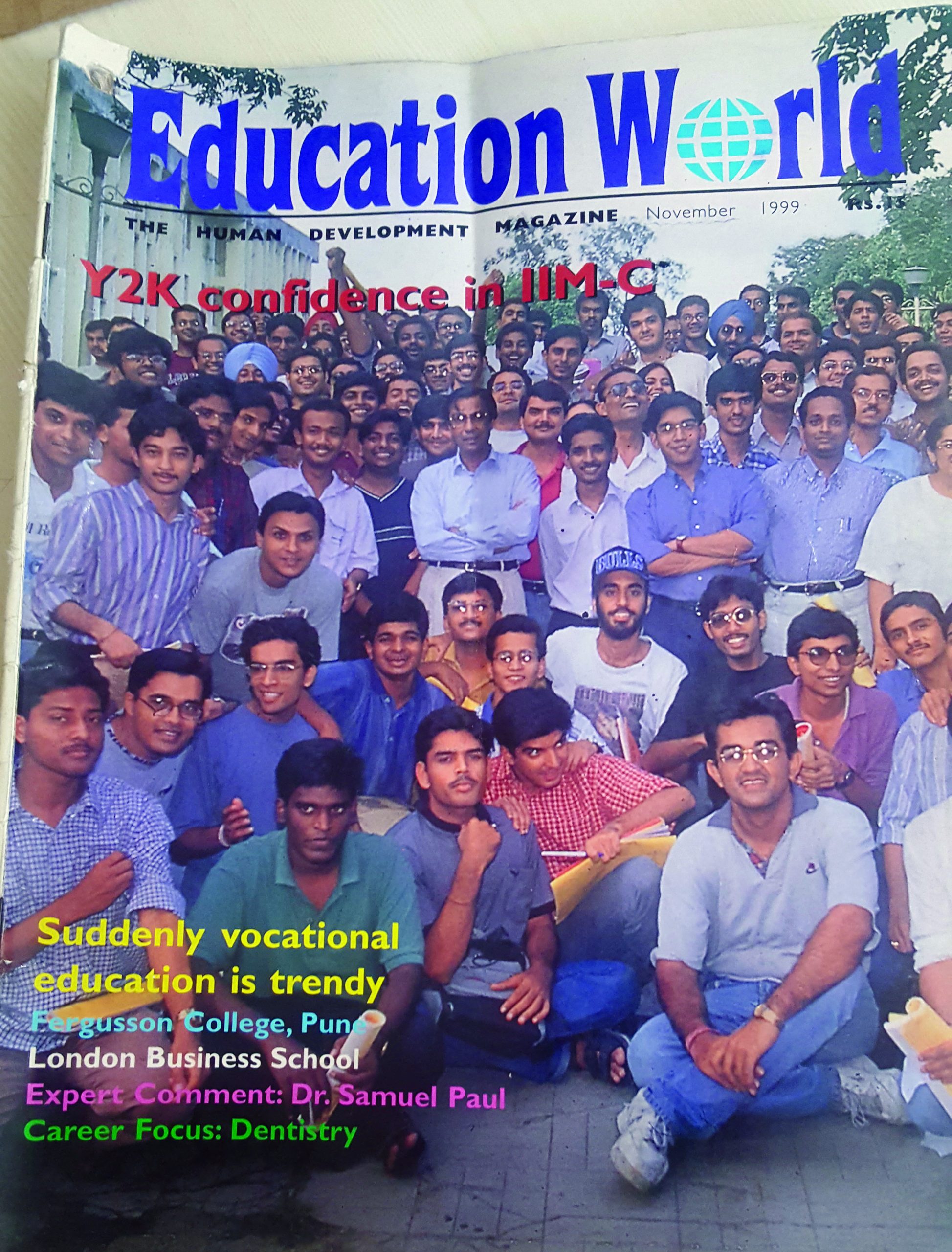 Y2 confidence in IIM-C
Y2 confidence in IIM-C
Against the backdrop of the global Y2 scare on the eve of the millennium, the EW inaugural cover story reported on the confidence within the Indian Institute of Management-Calcutta, India’s first business school, that the global panic was unwarranted. (EW November 1999)
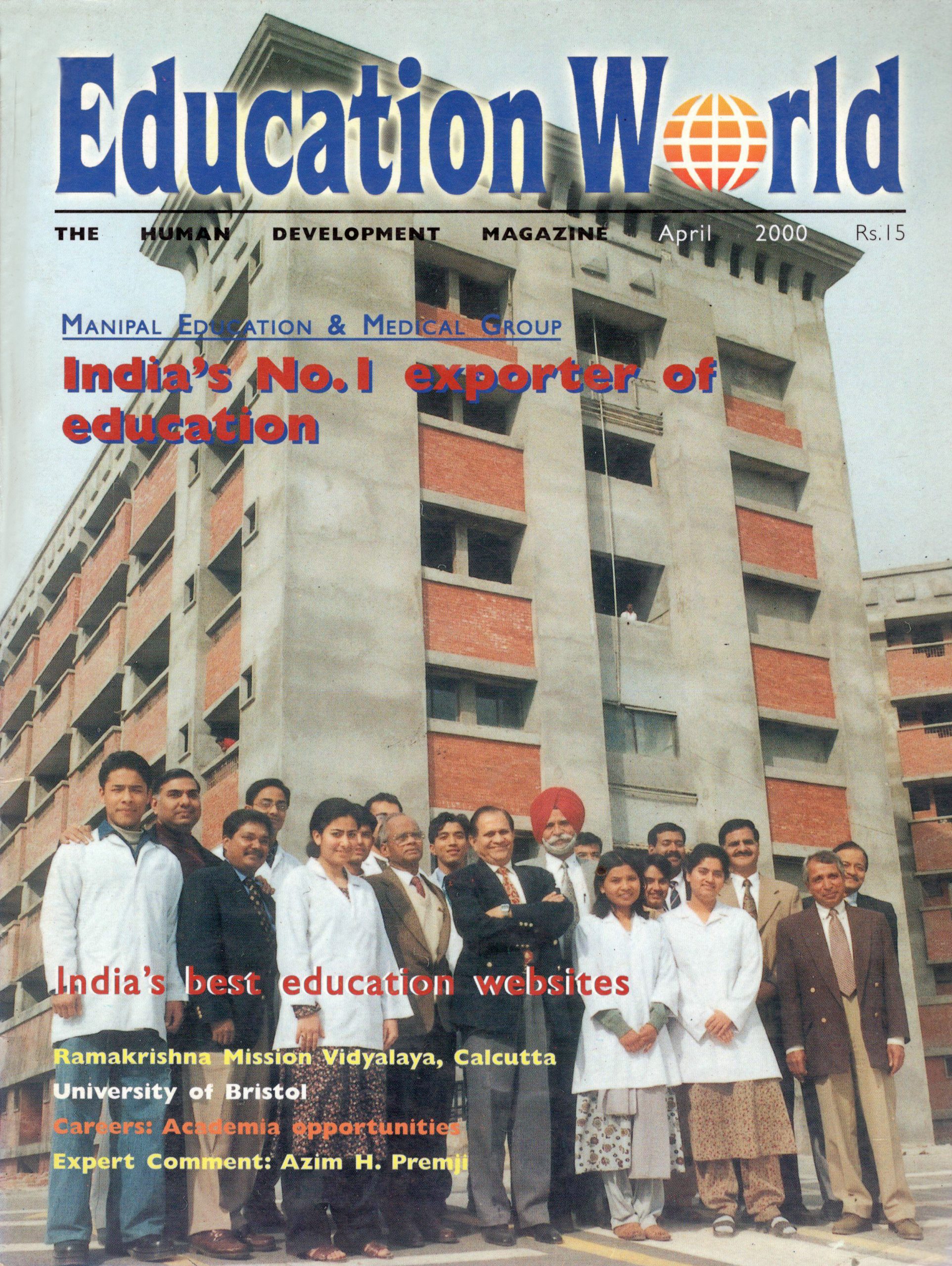 India’s #1 exporter of education
India’s #1 exporter of education
This cover feature highlighted the success story of the Manipal Education & Medical Group which, unsung in the hinterland, had quietly grown into a professional education (engineering, medical, pharmacy, hotel management services) multinational. (EW April 2000)
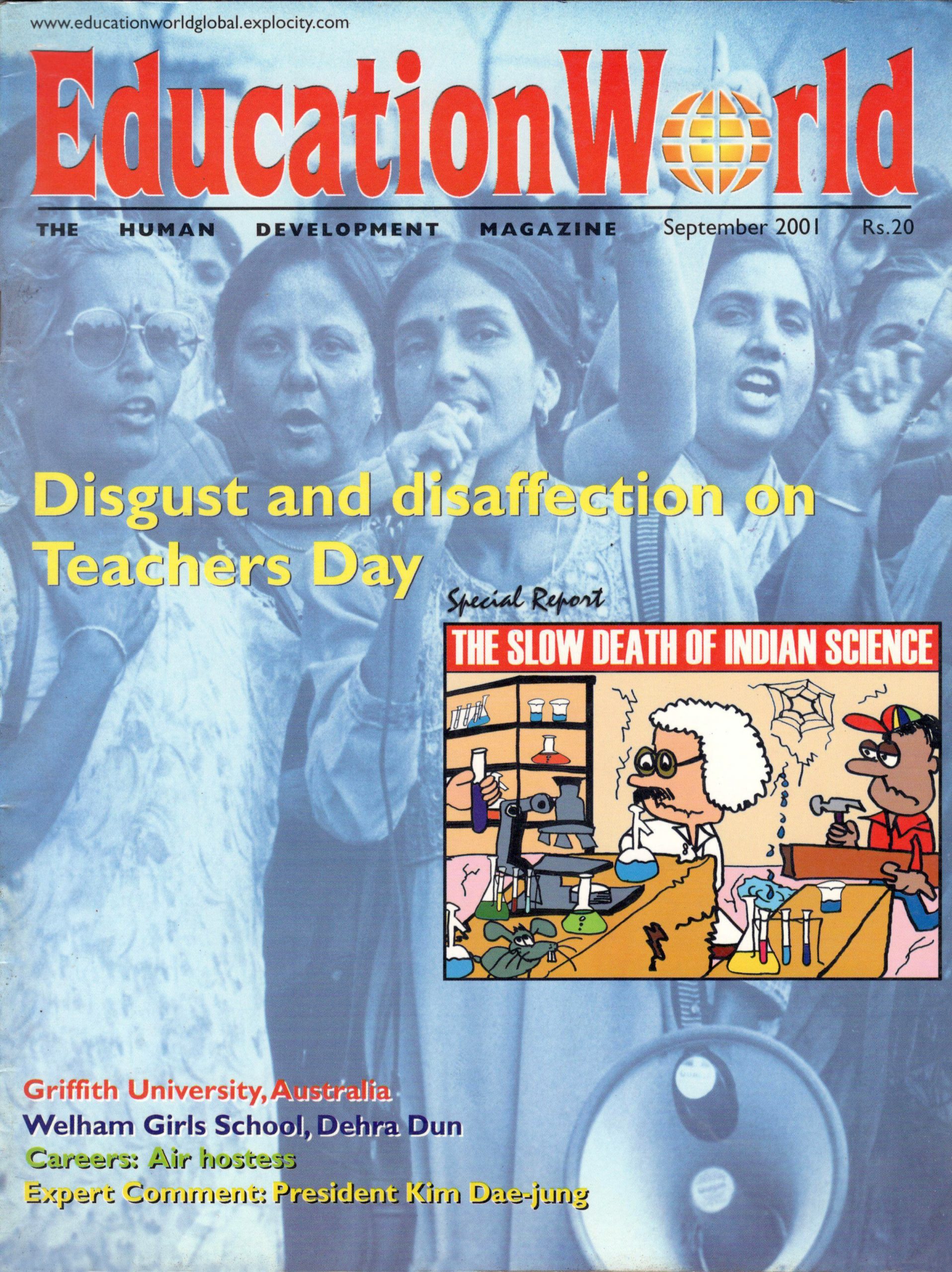 Disgust & disaffection on Teachers’ Day
Disgust & disaffection on Teachers’ Day
To mark Teachers’ Day (September 5), this story beamed a spotlight on the long-suppressed grievances of the country’s primary-secondary teachers including poor pay packages, dilapidated education infrastructure, suffocating bureaucratic micro-management and lack of social respect for teachers in Indian society. A strong case was made for a new deal for the country’s neglected teachers’ community. (EW September 2001)
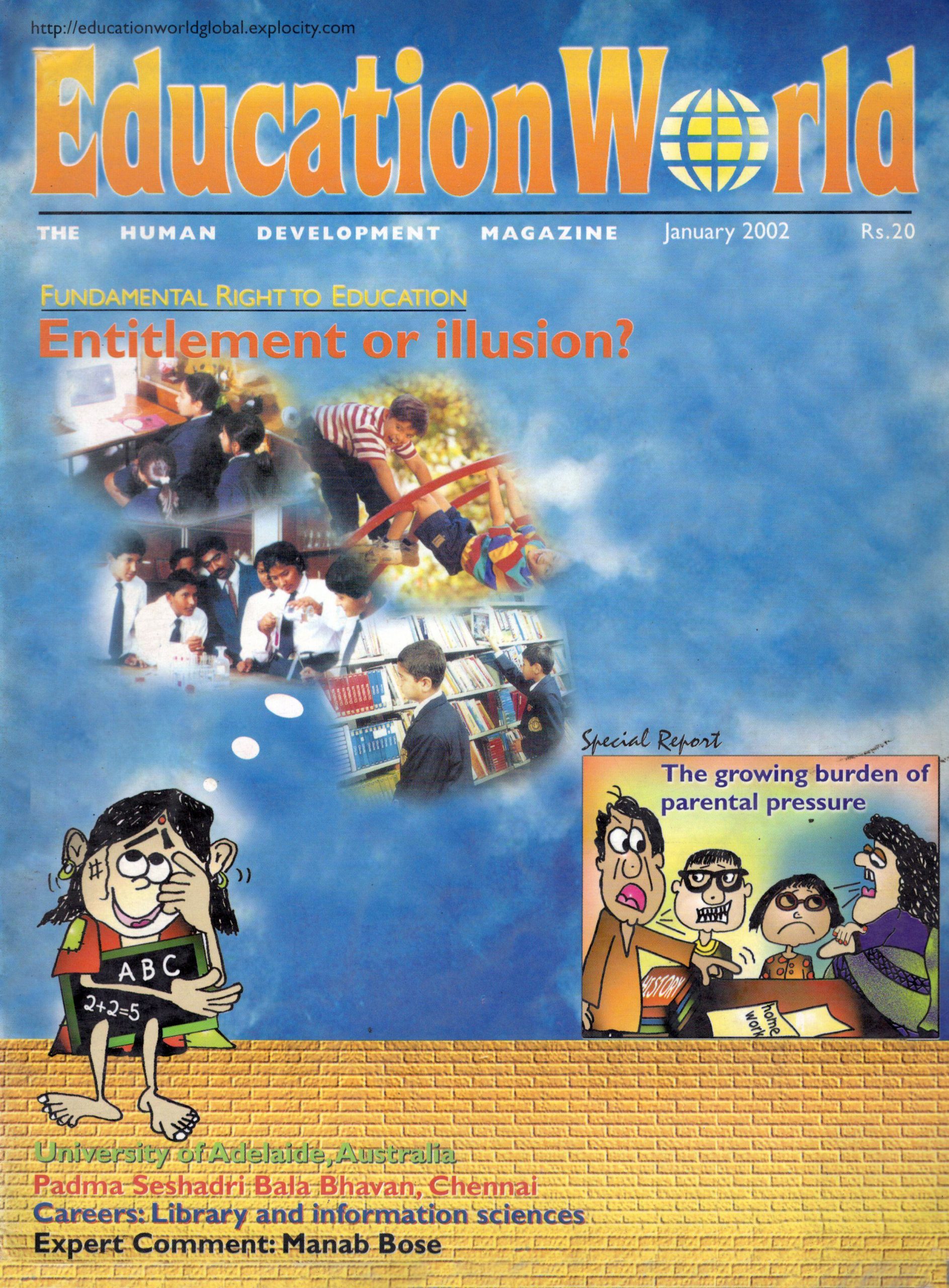 93rd Amendment: Entitlement or illusion?
93rd Amendment: Entitlement or illusion?
The Constitution (Ninety-third Amendment) Act, 2001, which promised to deliver the long-cherished dream of universal primary education, was unanimously passed by the Lok Sabha on November 28, 2001. This cover feature while heralding the landmark Act, raised the question whether it was legislation which would be practiced more in the breach than observance. (EW January 2002)
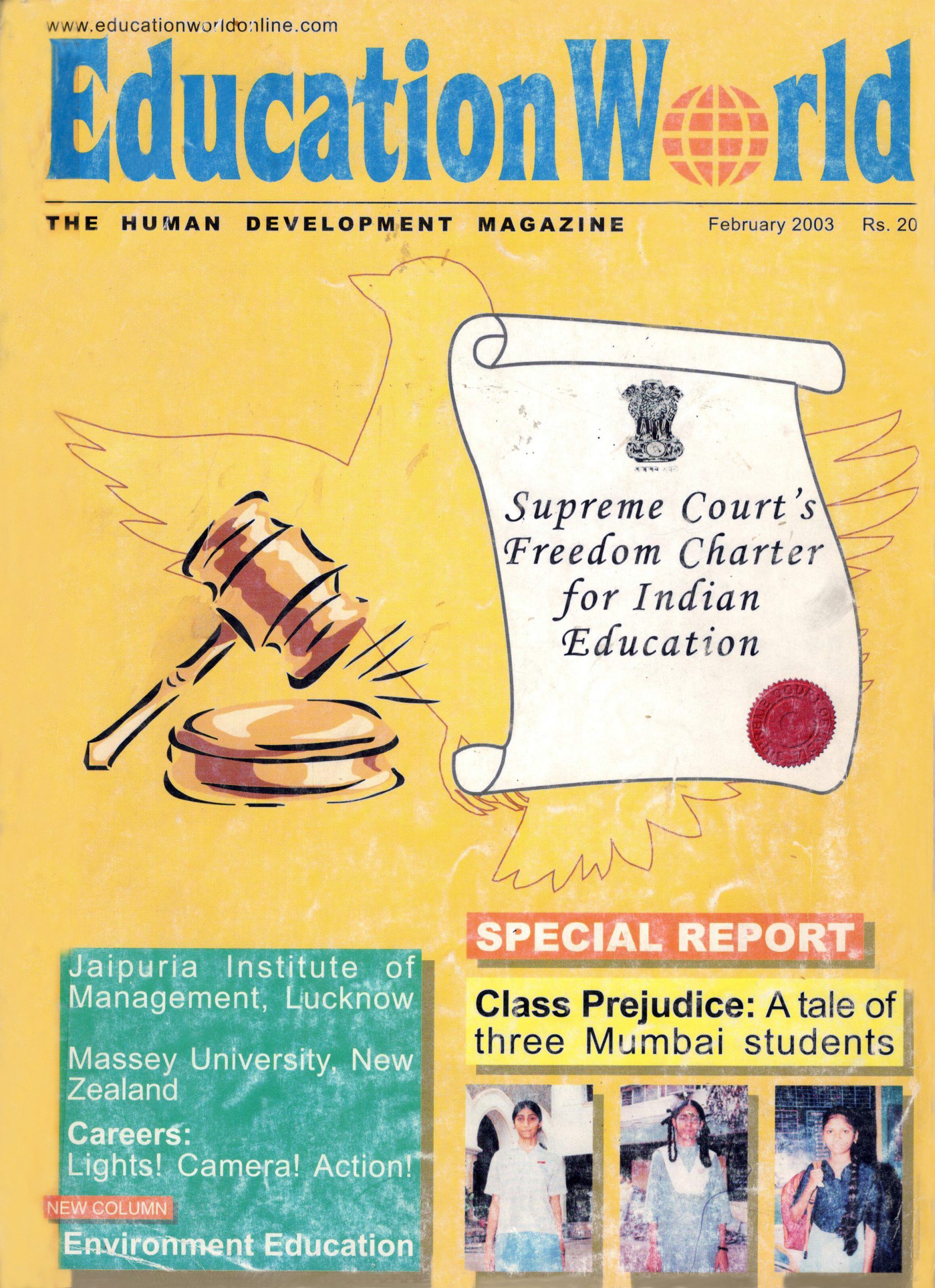 Supreme Court’s freedom charter for Indian education
Supreme Court’s freedom charter for Indian education
This cover story detailed the Supreme Court’s judgement in T.M.A. Pai & Ors vs. State of Karnataka & Ors in which a 11-judge bench decreed that all citizens have a fundamental right to practice the “vocation” of education and establish schools/colleges of their choice, regulate admissions based on merit, determine reasonable tuition fees and administer them without government interference. (EW February 2003)
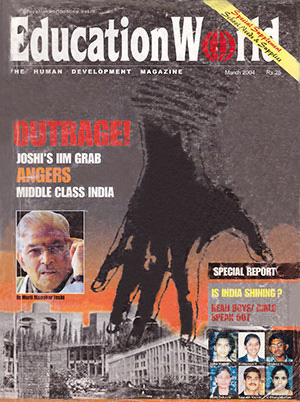 OUTRAGE! Joshi’s IIM-grab angers middle class India
OUTRAGE! Joshi’s IIM-grab angers middle class India
In 2004, Union HRD minister Dr. Murli Manohar Joshi issued an order directing IIMs to slash tuition-cum-residence fees by 80 percent from Rs.1.5-1.75 lakh to a uniform Rs.30,000 per year. Our story joined the storm of protest from industry and academia against this diktat. In 2004, the BJP was defeated in the general election and Dr. Joshi lost his Lok Sabha seat. (EW March 2004)
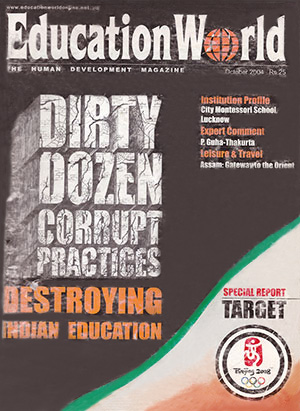 Dirty dozen corrupt practices destroying Indian education
Dirty dozen corrupt practices destroying Indian education
In an unprecedented cover story, we presented a list of 12 corrupt practices (such as pernicious licence-permit-quota regime, teacher transfer and salary payment rackets, unchecked textbooks publishing, printing and distribution rackets, etc) crippling Indian education. A strong case was made for addressing these corrupt practices as a precondition to attaining the millennium development goal of Education For All. (EW October 2004)
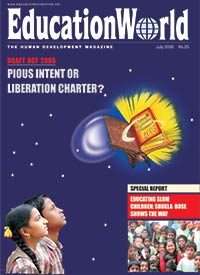 NCF 2005: Pious intent of liberation charter?
NCF 2005: Pious intent of liberation charter?
The National Curriculum Framework (NCF) 2005 for School Education was put under a microscope. While lauding NCF 2005 for being brilliantly written and “connecting knowledge to life outside the school; ensuring that learning is shifted away from rote methods; enriching the curriculum to provide for overall development of children rather than remain textbook centric, and making examinations more flexible and integrated with classroom life”, we criticised it for fudging the vital question of the resource mobilisation effort required to implement its recommendations. (EW July 2005)
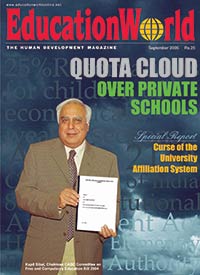 Quota cloud over private schools
Quota cloud over private schools
On June 30, 2005, a special committee chaired by legal luminary Kapil Sibal recommended that 25 percent of capacity in elementary education (class I-VIII) in private schools should be reserved for poor children in their neighbourhoods. Our cover story warned this government quota would become the thin end of a wedge for incremental government interference in the administration and operations of India’s private schools. (EW September 2005)
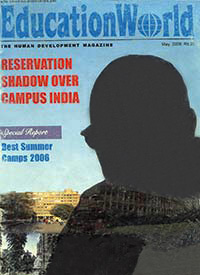 Reservation shadow over campus India
Reservation shadow over campus India
On April 5, 2006 Union human resource development minister Arjun Singh announced that the 17-party coalition UPA government has approved his ministry’s proposal to reserve an additional 27 percent capacity in all Central government-promoted universities and institutes (JNU, IITs, IIMs, AIIMS, etc) for OBC (other backward classes/castes) students. The ramifications of this additional reservation proposal which threatened to dilute academic standards were examined in detail in this cover feature. (EW May 2006)
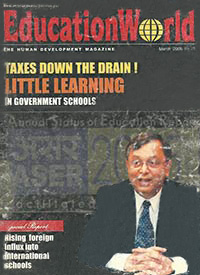 Taxes down the drain: Little learning in government schools
Taxes down the drain: Little learning in government schools
The Annual Status of Education Report (ASER) 2005 — the country’s first independent nationwide survey of rural primary education — published by the Pratham Education Foundation confirmed suspicion that post-independence India’s elementary (primary) education effort has been a massive failure. ASER 2005 revealed that almost 60 percent children in classes V-VIII of rural schools cannot read a simple story of class III level difficulty. The report and EW’s detailed story prompted a national debate on finding solutions to the problems of deficient infrastructure, unsatisfactory learning outcomes, and chronic teacher absenteeism in rural schools. (EW March 2006)
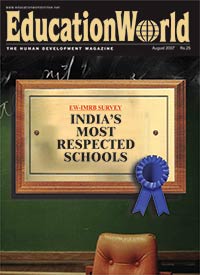 EducationWorld India’s Most Respected Schools
EducationWorld India’s Most Respected Schools
The inaugural EducationWorld India’s Most Respected Schools Rankings field-based survey rating and ranking 83 schools was published. Since then, this annual survey has evolved into the annual EW India School Rankings — the world’s largest and most comprehensive school rankings survey — rating and ranking over 4,000 schools in 434 cities and towns countrywide across 14 parameters of K-12 education excellence. (EW August 2007)
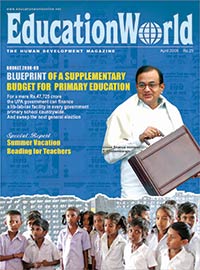 Blueprint of a supplementary budget for primary education
Blueprint of a supplementary budget for primary education
Against the backdrop of Union Budget 2008-09 making paltry allocation for education, this path-breaking story presented an innovative supplementary budget for primary education and a resource mobilisation schema to equip government schools suffering infrastructure deficiencies such as laboratories, libraries and lavatories. This EW budget calculated the one-time cost of equipping government schools with adequate lab-lib-lav facilities at Rs.47,725 crore. The EW schema suggested ways and means to raise the said sum by way of reducing indiscriminate middle class subsidies; steady disinvestment of government-held equity in public sector enterprises, among others. (EW April 2008)
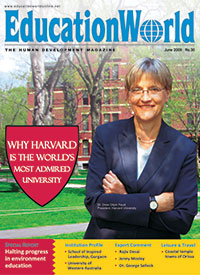 Why Harvard is the world’s most admired university
Why Harvard is the world’s most admired university
This first-ever detailed feature of an academic institution abroad offered valuable insights into Harvard University’s unique combination of institutional qualities — academic innovation, pursuit of scholastic excellence and creation of new knowledge, ability to attract the world’s brightest and best academics, students, and not least its unmatched institutional fund-raising capabilities. (EW June 2009)
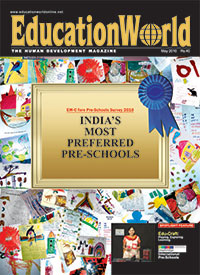 India’s most preferred preschools
India’s most preferred preschools
The inaugural EW India Preschool Rankings (EWIPR) survey rating and ranking Top 20 pre-primaries in six major cities was published. This was followed by the first EW Early Childhood Education Global Conference staged in India. Together for the first time, they impacted the critical importance of early childhood care and education upon the national consciousness. Since then, the annual EWIPR has evolved into the country’s largest preschools rankings survey with league tables ranking over 500 preschools in 16 cities countrywide, across 10 parameters of early childhood education excellence. (EW May 2010)
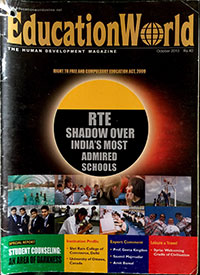 RTE shadow over India’s most admired schools
RTE shadow over India’s most admired schools
With the Right to Free & Compulsory Education Act (RTE) 2009, becoming operational on April 1, 2010, this story reported that the misgivings of private school managements about the Act have transformed into snowballing fear of creeping erosion of academic and administrative autonomy. This extensive analysis of the RTE Act highlighted how this well-intentioned legislation was being used to dilute the Supreme Court judgement in the landmark T.M.A. Pai Foundation Case (2002). (EW October 2010)
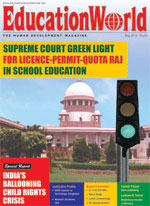 Supreme Court green light for licence-permit-quota-inspector raj in school education
Supreme Court green light for licence-permit-quota-inspector raj in school education
The majority judgement of a three-judge bench delivered on April 12 substantially upheld the constitutional validity of the Right to Free and Compulsory Education (RTE) Act, 2009 and particularly its controversial reserved quota for poor neighbourhood children in private schools. Our cover story argued that the Supreme Court’s wafer-thin majority verdict will open the gates of private schools for the re-entry of dreaded licence-permit-quota and inspector raj. (EW May 2012)
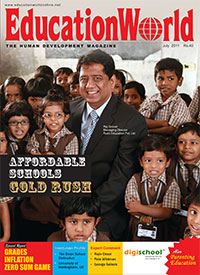 Affordable schools gold rush
Affordable schools gold rush
This lead feature recounts how post-liberalisation India’s new genre of unstoppable education entrepreneurs have launched an estimated 400,000 affordable budget private schools (BPS), to provide low-cost education to children of lower middle class households averse to failing government schools. (EW July 2011)
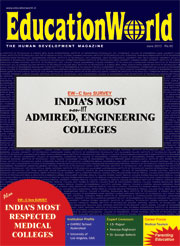 India’s most admired engineering colleges
India’s most admired engineering colleges
The inaugural EW ranking of engineering colleges and private B-schools was published. Since then, this survey has evolved into the annual EW India Higher Education Rankings. In EWIHER, the country’s Top 300 private and government universities, Top 500 private/government autonomous and non-autonomous colleges, and Top 100 private engineering colleges and B-schools are rated and ranked across 15 parameters of higher education excellence. (EW June 2013)
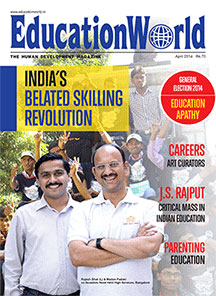 India’s belated skilling revolution
India’s belated skilling revolution
The great sin of sustained neglect of primary, secondary and higher education in post-independence India has been compounded by continuous neglect of vocational education and training. Our story reported on a quiet skills revolution gathering momentum countrywide and Central/state governments and edupreneurs finally waking up to the need to disseminate VET on a massive scale to make the country’s youth employable. (EW April 2014)
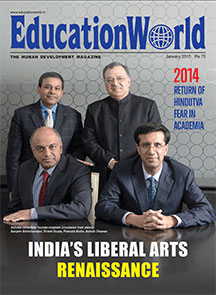 India’s liberal arts renaissance
India’s liberal arts renaissance
This cover feature highlighted a clutch of new globally benchmarked private liberal arts universities springing up across the country. It welcomed these new genre private universities for addressing the neglect of arts and humanities education in post-independence India. (EW January 2015)
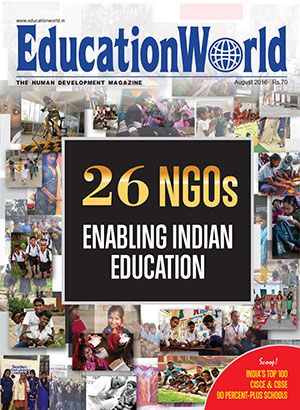 26 NGOs Enabling Indian Education
26 NGOs Enabling Indian Education
If India’s K-12 education system hasn’t collapsed completely, it’s due to the efforts of the country’s private schools and estimated 2 million NGOs. In this first-of-its-type story we highlighted the contribution of 26 of the country’s most well-known NGOs which are transforming Indian education for the better. (EW August 2016)
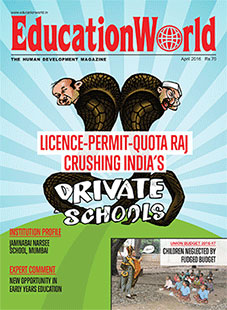 Licence-Permit-Quota Raj Crushing India’s Private Schools
Licence-Permit-Quota Raj Crushing India’s Private Schools
Instead of focusing their attention on the country’s dysfunctional 1.2 million government primary-secondaries, politicians and bureaucrats of the Central and state governments are tying up the nation’s private schools in swirls of red tape even as admission queues lengthen outside their gates. This cover story blew the whistle on the neta-babu conspiracy to dumb down India’s private schools through myriad levelling-down rules and regulations. (EW April 2016)
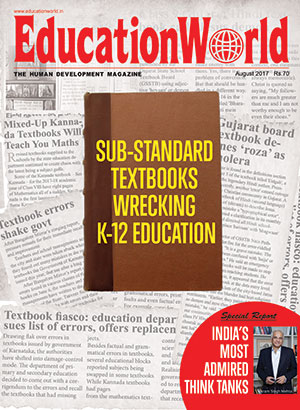 Sub-standard Textbooks Wrecking K-12 Education
Sub-standard Textbooks Wrecking K-12 Education
The deep divide between the quality of textbooks prescribed by elite schools affiliated with pan-India and offshore exam boards such as CISCE, CBSE, Cambridge (UK) and IB (Geneva) and the slapdash, sub-standard textbooks imposed upon the majority of hapless children enrolled in schools affiliated with 31 state exam boards, is wrecking K-12 education and dividing India. This EW story argued for restoring equivalence between the quality of primary-secondary education in schools affiliated with national and offshore exam boards and the state exam boards, and recommended ending the great textbooks commissioning, printing and publishing rackets which have flourished in the states for over half a century. (EW August 2017)
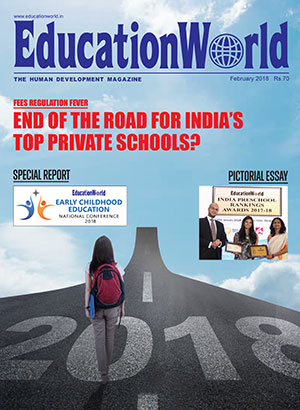 Fee regulation fever: End of the road for India’s top private schools?
Fee regulation fever: End of the road for India’s top private schools?
A December 27 judgement of the Gujarat high court upholding the Gujarat Self-Financed Schools (Regulation of Fees) Act, 2017 prescribing absurdly low fees ceilings for all primary, secondary and higher secondary schools, came as a thunderclap for private independent schools countrywide. In this story, we reported on similar instances of state governments interfering with self-administration of private schools by imposing tuition fee ceilings and warned that this could be the beginning of the end of India’s private independent schools. (EW February 2018)
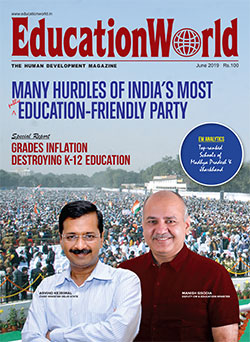 Aam Aadmi Party: Many hurdles of India’s most public education-friendly party
Aam Aadmi Party: Many hurdles of India’s most public education-friendly party
Against the backdrop of indifference to education and human resource development of all political parties across the ideological spectrum, the Aam Aadmi Party, which rules Delhi state with a massive majority in the legislative assembly, is an exception.
Unlike all other political parties, education reform is a major issue in its electoral campaigns. Our story while lauding AAP for making good its promise to rejuvenate Delhi’s languishing public K-12 education system, criticised it for unwarranted interference in the administration of the state’s private schools. (EW June 2019)
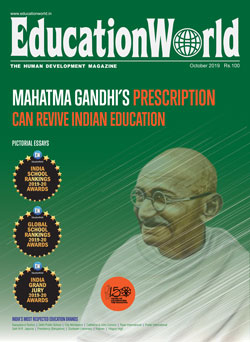 Mahatma Gandhi’s prescription can revive Indian education
Mahatma Gandhi’s prescription can revive Indian education
On the 150th birth anniversary of Mahatma Gandhi, this cover story shone a spotlight on his nai talim education philosophy which propounds that the heads, hearts and hands of children need to be educated simultaneously. All schools should devise curriculums blending academics, skills development and moral character building. This special Gandhi sesquicentennial celebration story argued that if Gandhi’s prescription for K-12 education is officially adopted, it could resuscitate India’s moribund school education system. (EW October 2019)
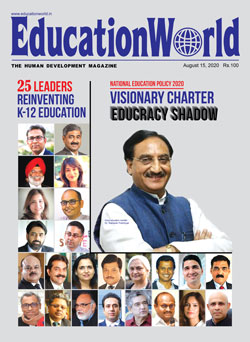 National Education Policy 2020: Visionary charter educracy shadow
National Education Policy 2020: Visionary charter educracy shadow
On July 29, the much-awaited National Education Policy (NEP) 2020, formulated after an interregnum of 34 years following the detailed recommendations of the K. Kasturirangan Committee, was presented to the public. Our comprehensive story analysed the 65-page NEP 2020 and its recommendations from early childhood to higher education. It concluded that the policy is an amalgam of high rhetoric clouded by implementation uncertainty, because it has established too many supervisory committees. (EW August 2020)
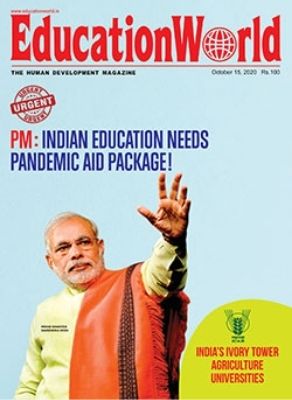 Dear Prime Minister, Why no pandemic package for education?
Dear Prime Minister, Why no pandemic package for education?
With the prolonged Covid-19 pandemic lockdown causing unprecedented distress and turmoil in Indian education, child rights activists, K-12 education leaders, private school managements and teachers associations petitioned the Central and state governments to urgently provide bridge finance, loans and/or grants to ensure learning continuity of the country’s 260 million school-going children, of whom 47.5 percent are in private schools.
But this SOS chorus fell on deaf ears. Our cover feature questioned why the mega Rs.20.97 lakh crore Covid-19 economic aid package announced by Prime Minister Narendra Modi totally ignored the pandemic-battered education sector. (EW October 2020)
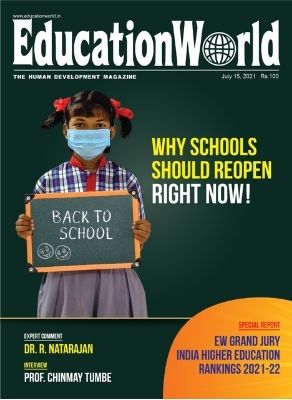 Why India’s Schools Should Reopen Right Now
Why India’s Schools Should Reopen Right Now
With the lockdown of education institutions including schools and colleges because of the Covid-19 pandemic stretching to 56 weeks — the longest shutdown of education institutions worldwide — this cover story argued that the balance between children’s safety against the pandemic and their right to education needs to be restored. It demanded that the Central and state governments waste no more time in restarting India’s long shuttered schools with adequate safety protocols. (EW July 2021)
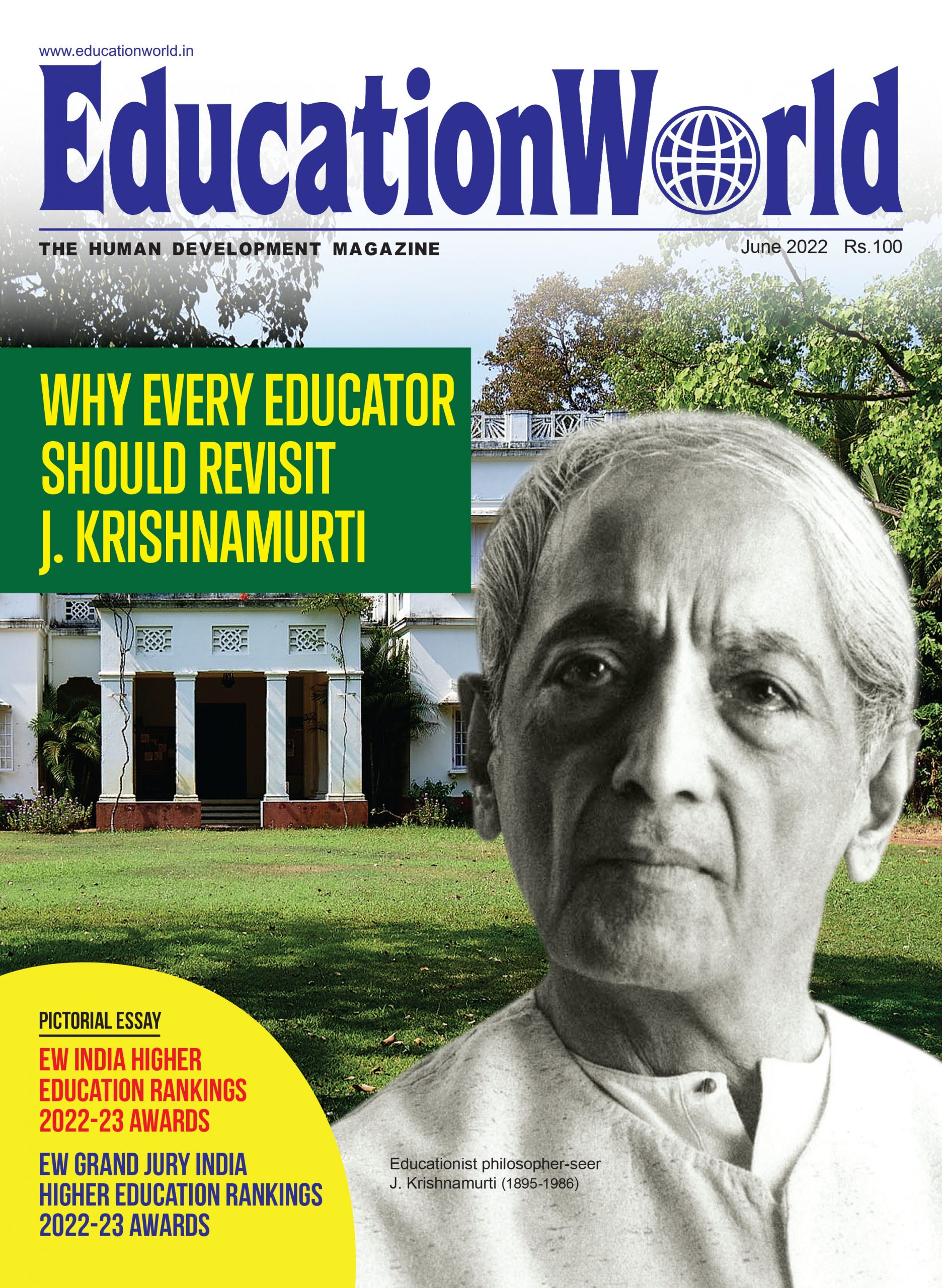 Why all educators should revisit J. Krishnamurti
Why all educators should revisit J. Krishnamurti
As the country’s education institutions begin to regain post-pandemic momentum in a fractious era of religious and communal discord, government and private educators would do well to revisit the education philosophy and teachings of extraordinary sage-philosopher-educationist J. Krishnamurti.
Our cover feature summarised JK’s education philosophy, pedagogies and best practices being faithfully implemented in the few Krishnamurti Foundation schools countrywide, and proposed that his education and art of living philosophy has the potential to stimulate a renaissance of Indian education. (EW June 2022)
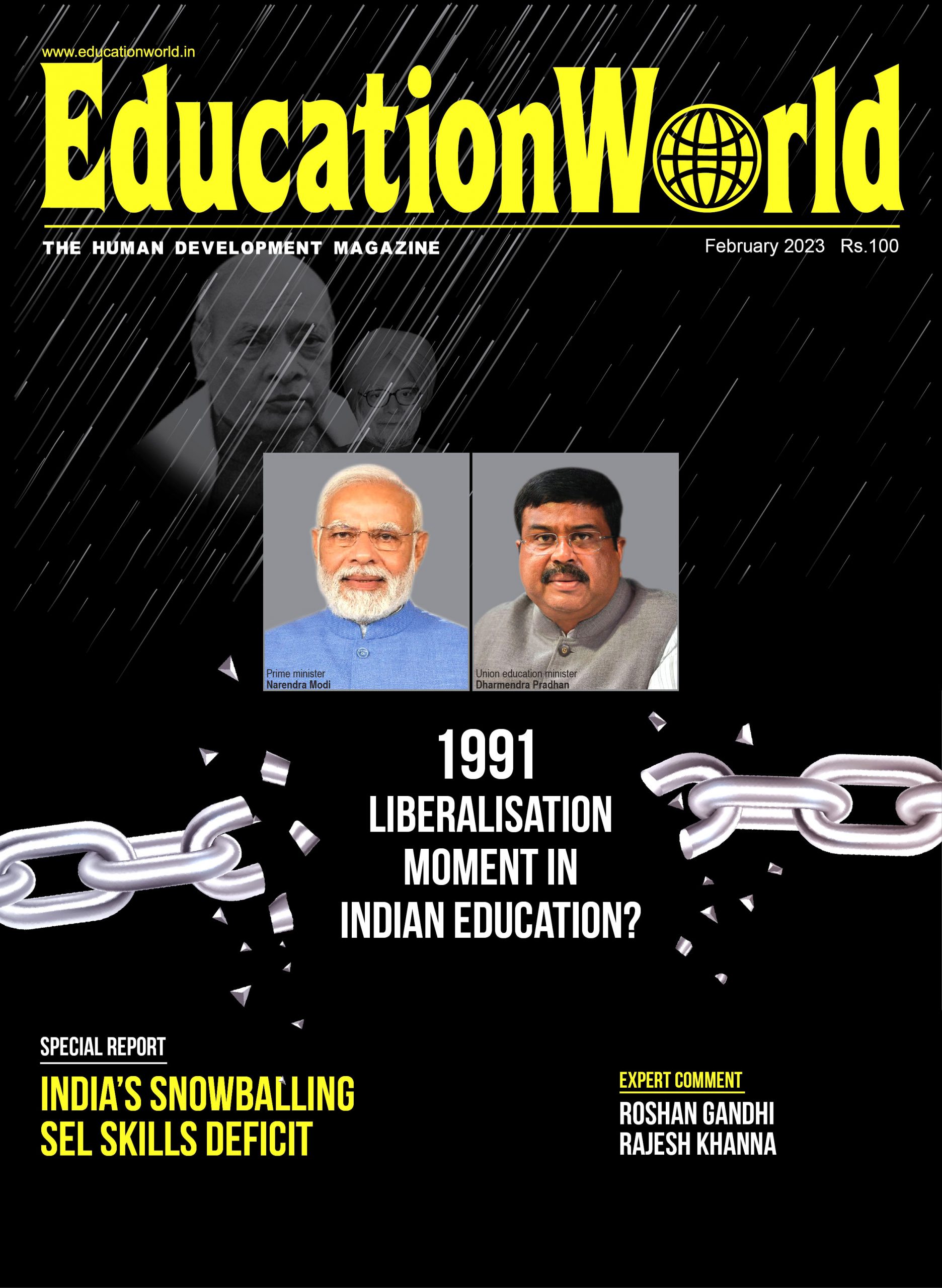 1991 inflection point for Indian education?
1991 inflection point for Indian education?
This cover feature reports that three decades after the watershed Union Budget of 1991 catalysed liberalisation and deregulation of Indian industry, doubled post-independence India’s annual rate of economic growth which averaged 3.5 percent, similar winds of change are gathering momentum in India’s moribund education sector mired in dead habit, rote learning and rock-bottom learning outcomes. (EW February 2023)
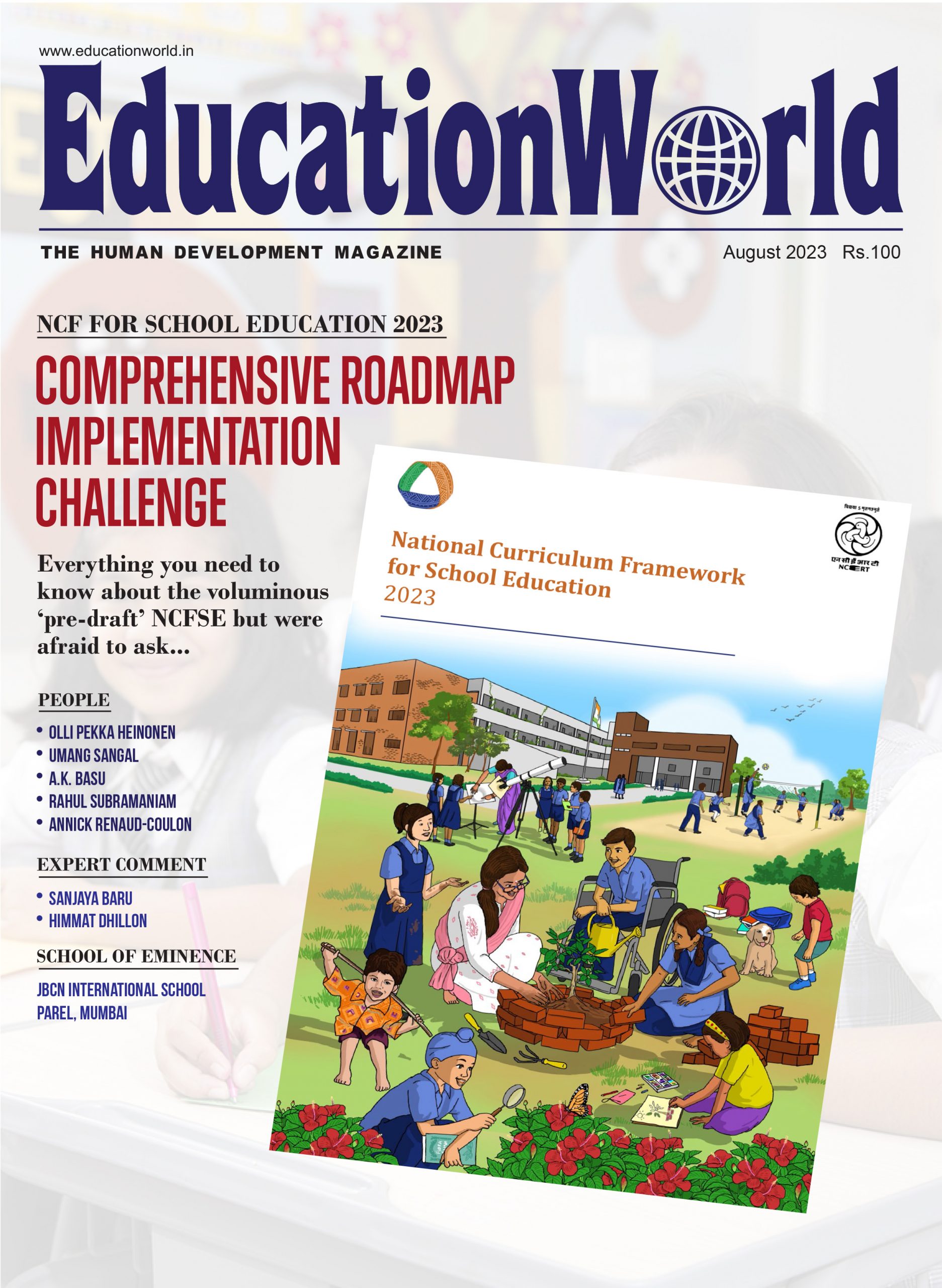 National Curriculum Framework for School Education 2023: Comprehensive roadmap implementation challenge
National Curriculum Framework for School Education 2023: Comprehensive roadmap implementation challenge
The National Curriculum Framework for School Education (NCF-SE) 2023 outlining ways and means to implement the National Education Policy (NEP) 2020 in the country’s 1.5 million primary-secondary schools was presented to the nation in April. In this cover story, we summarised the 628-page NCF-SE 2023, its implementation challenges and way forward, for the benefit of teachers, parents and students. (EW August 2023)
To read EW turning point lead features visit EW Archives on www.educationworld.in























